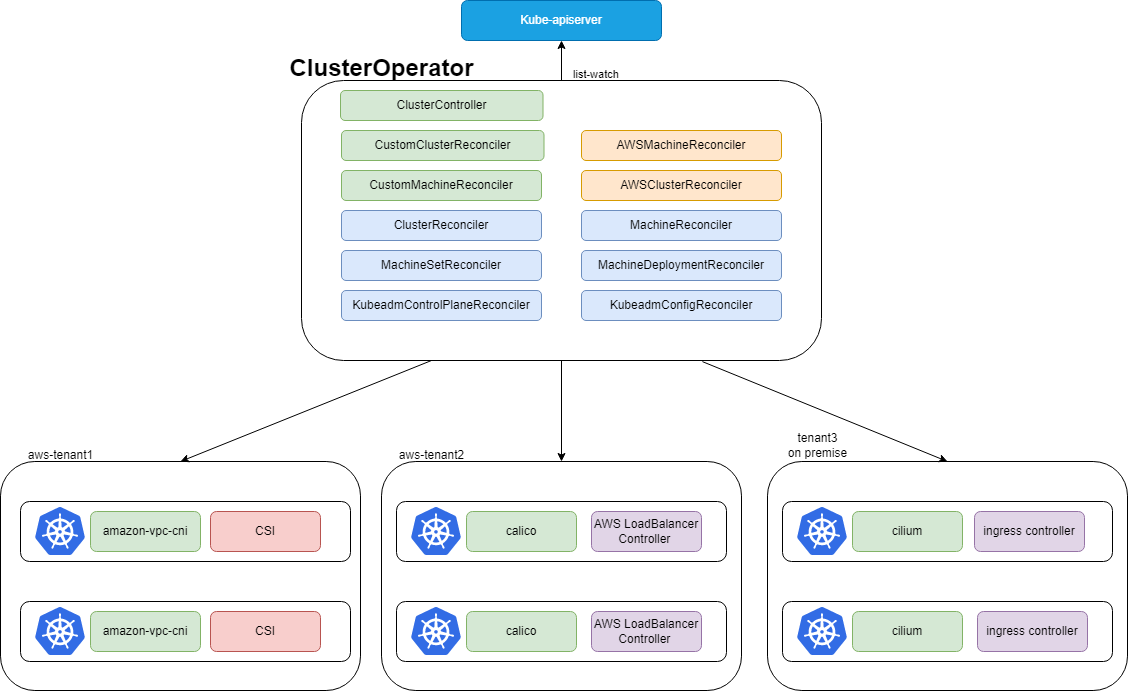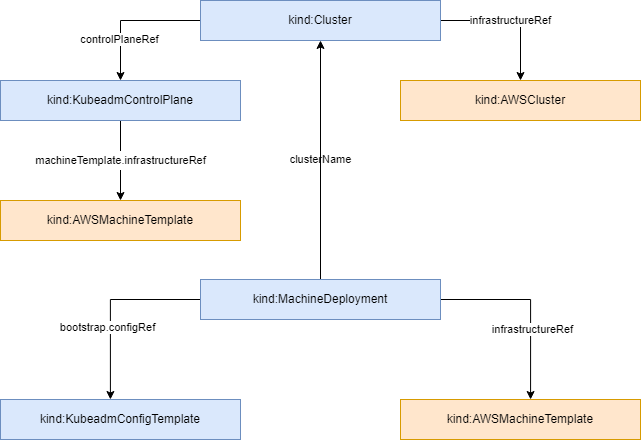Distributed Cloud-Native Platform Kurator v0.2.0 Officially Released! One-Click Construction of Distributed Cloud-Native Platform
Beijing Time, February 9, 2023 - Kurator has officially released version v0.2.0.
Kurator is an open-source distributed cloud-native platform that helps users build their own distributed cloud-native infrastructure, aiding in the digital transformation of enterprises. Version v0.1 of Kurator integrated mainstream open-source projects like Karmada, Volcano, Istio, and Prometheus, providing unified multi-cluster management, scheduling, traffic governance, and unified application monitoring capabilities for distributed cloud-native environments.
In the latest release, v0.2.0, Kurator has added two major categories of key features, enhancing observability and introducing cluster lifecycle management, including the following significant updates:
- Multi-cluster monitoring and metric persistence storage based on Thanos
- Real-time K8s application monitoring based on Pixie
- Support for lifecycle management of local data center clusters
- Support for lifecycle management of self-built clusters on AWS Cloud
With these updates, Kurator now provides management capabilities for distributed cloud-native infrastructure, meaning that Kurator can rely on infrastructure and Kubernetes clusters to better manage various cloud-native middleware, providing out-of-the-box distributed cloud-native capabilities for users.
Key Features of Kurator
Observability
-
Multi-Cluster Monitoring and Metric Persistence Storage Based on Thanos: Thanos is an open-source, highly available Prometheus solution with persistent storage capabilities. It is a CNCF incubation project and one of the most popular multi-cluster monitoring projects. Core features of Thanos include global query views, high availability, data backup, history, and low-cost data access.
Kurator offers a simple command to install Thanos, facilitating the quick construction of multi-cloud and multi-cluster monitoring systems.
User Manual: Thanos Documentation
-
Real-Time K8s Application Monitoring with Pixie: Pixie, an open-source Kubernetes observability tool, enables users to view advanced cluster states (service topology, cluster resources, application traffic) and delve into more detailed views (Pod status, flame graphs, individual full-body application requests). Pixie uses eBPF to automatically collect telemetry data such as requests, resource and network metrics, application profiles, offering a completely non-intrusive approach to application monitoring with very low CPU usage, typically under 2%. Users can now enable Pixie’s real-time monitoring with one click.
User Manual: Pixie Vizier Documentation
Cluster Lifecycle Management
-
New Component, Cluster Operator: Provides cloud-native ways to manage Kubernetes clusters. Cluster Operator can easily manage the lifecycle of Kubernetes clusters across various infrastructures, including public clouds, hybrid clouds, and local data centers.
The overall architecture of the Kurator Cluster Operator is as follows:
The Kurator Cluster Operator is equipped with various controllers that monitor cluster API objects and then create Kubernetes clusters on designated infrastructures.
Design Document: Cluster Operator Documentation
-
Support for Local Data Center Self-Built Clusters: Lifecycle management capabilities for local data center clusters are primarily based on KubeSpray. It allows for the deployment of production-grade Kubernetes clusters on existing virtual machines and bare-metal servers using a declarative API and manages their lifecycle. Local data center self-built clusters fully utilize the open-source K8s software stack for rapid deployment, setting up container networking, DNS servers, and more.
User Manual: On-Premise Deploy Documentation
-
Support for AWS Cloud Self-Built Clusters: Kurator supports building clusters in the AWS public cloud using the integrated Cluster API Provider AWS. It offers an experience consistent with the AWS managed Kubernetes service EKS, leveraging AWS infrastructure (Elastic Cloud Servers, VPC networks, load balancers, etc.). Resources required for AWS self-built clusters include:
- Cluster: Represents a complete cluster, including references to the KubeadmControlPlane and the infrastructure AWSCluster.
- KubeadmControlPlane: Represents all the configurations needed for kubeadm to install the Kubernetes control plane.
- AWSCluster: Represents AWS as the infrastructure for the Cluster.
- AWSMachineTemplate: Represents the template for creating AWS EC2 instances.
The cluster resource topology structure is as follows:
Through the Cluster, KubeadmControlPlane, and other Cluster API controllers, as well as the provider offered by AWS, Kurator manages the lifecycle of self-built clusters in AWS according to given configurations.
User Manual: AWS Deploy Documentation
Kurator: One-Click Construction of Distributed Cloud-Native Platform
Kurator, first launched in June 2022, is the industry’s first open-source distributed cloud-native platform. By integrating mainstream open-source technology stacks and excellent cloud-native fleet management performance, Kurator provides a one-stop, ready-to-use distributed cloud-native capability, building a solid foundation for distributed cloud-native technology and helping businesses upgrade to distributed, cloud, and edge computing.
GitHub Address: Kurator on GitHub

